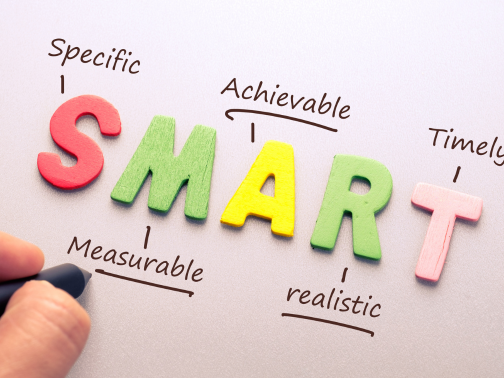Contents
Toggle
Meet David De’ Ath, co-founder, editor, and writer at Wonderful World English. With his extensive background as an English teacher, David provides valuable insights and practical tips on ESL for students and teachers alike.
English is both the most studied and spoken language in the world.
It is the national language of many large economies and opens doors to numerous opportunities for personal and professional growth.
You may be a teacher, a friend, or a family member who wishes to support someone on their English learning journey.
This can be a rewarding experience for both you and the other person, and if you’re reading this, we’re here to help you successfully achieve this goal of assisting them in learning English.
Learning a new language can be daunting, but it can become an enriching and wonderful experience with the proper guidance and support. Helping someone learn English will involve understanding their needs, setting goals, providing relevant resources, and keeping them motivated along the way.
I am an experienced English as a Second Language (ESL) teacher, and my wife is also a Chinese national.
When we first met, we could hardly speak a word of each other’s language.
I’ve seen her English learning journey develop so much over the past three years, and she can now speak the language to a much higher degree.
There is still room for improvement, as there always will be, but I can say firsthand what it takes to achieve a language learning goal successfully.
This guide is a comprehensive step-by-step plan that will help any serious learners out there to learn English.
If you are thinking of teaching someone more casually, this can still be very useful in giving you ideas on how to help them.
Now, let’s explore fifteen effective strategies and tips to help someone learn English!

15 Steps to Teaching English
Below are fifteen key steps to help anyone, regardless of whether they are a teacher or not, help another person to learn English:

1. Get Motivated!
First and foremost, any language teacher can attest that if the learner is not properly motivated, they won’t be making much progress.
If they are not well motivated, help show them why learning English is a great idea.
Explain the significance of English as a global language and detail how having higher English proficiency often means better future opportunities.
Learning English can be an effective key to unlocking much of the world in business, education, entertainment, and relationships.
This could mean better-paying jobs, more authority, and overall happiness in the long run.
Emphasizing the practical benefits and reminding them along the way will help the learner stay motivated and committed.
You can learn more about English proficiency in Asia in the article below, which will help you better understand why so much emphasis is put on learning it worldwide.
Related Article: What Asian Countries Speak English? – Full Guide

2. Assess Ability
Each learner will have their own set of strengths, weaknesses, and incentives.
Can they already hold a basic English conversation, or are they learning from scratch?
How old are they? Are they male or female?
All of these are important factors when analyzing what it will take to maximize results and make the learning process as enjoyable as it can be for both student and teacher.
You should see their current speaking, reading, and writing ability.
From there, you will be able to assess what areas need the most improvement, and you can build a plan around that.
This assessment will guide your approach and enable you to tailor it to their requirements.
If you’re unsure how to assess someone’s English level, check out this helpful video below.
It can help you with ideas on how to test someone’s English level, or you could send it directly to the person you want to teach to find out their current speaking ability (this is not so relevant if they are starting from scratch).
3. Set Realistic Goals
Now we’ve determined your learner’s current English level; we can begin to define clear (and achievable) goals.
We can do this by breaking goals into smaller milestones and developing a timeline for achieving them.
Having something to aim for will significantly improve the learning process.
This is an important aspect of giving students proper direction and will also increase their motivation.
Set realistic targets like the student can understand something or write something at a particular time and then build a plan around that.
Each lesson can be another step towards achieving that goal, helping the learner not feel overwhelmed and ensuring they comprehend the content.

4. Create a Plan
We know what we want to achieve and can begin creating a plan.
A proper learning plan will outline the topics to be covered, what materials will be used, and other tasks or activities.
A good English study plan should include a mix of grammar, vocabulary, and practical elements contributing to a well-rounded experience.
You should find time to set aside a schedule for your student to study each week.
I would suggest at least an hour each time, preferably 90 minutes to two hours.
Of course, the more sessions you have will mean faster progress, but you don’t want to overdo it, or it may negatively impact motivation levels.
The guide below can help you with lesson planning!
Related Article: How to Lesson Plan for New Teachers – Free Guide

5. Encourage Regular Practice
Consistency is key when learning any language.
A good teacher will also encourage students to practice outside the classroom.
They can do this by setting aside time slots each day to review what they learned in the lesson.
Students should be encouraged to immerse themselves in situations where they will be exposed to English as much as possible.
This means practicing at home, reading English books, watching movies or TV shows with subtitles, and conversing with native speakers.
Immersing themselves in English, and practicing at any opportunity, will greatly aid them in the language-learning process.

6. Provide Materials
Another effective way to help an English learner is to provide relevant resources.
These include textbooks, worksheets, language learning apps, and songs or videos.
You can find a wealth of English materials on the internet for free for learners of all levels.
As an English speaker, you will know the materials most appropriate for your learner.
Whether you’re teaching online or face-to-face, providing materials will be a great way to help enhance the quality of the learning.
With the emergence of AI, the learning landscape is transforming.
Teachers and students everywhere are now logging into sites like ChatGPT to help them achieve their goals.
For a full guide on how to use ChatGPT to get best results in English learning, check out the link below!
Related Article: ChatGPT & English Learning: A Teacher’s Guide

7. Incorporate Activities
Including plenty of relevant activities is a great tip to keep lessons fun and engaging.
These can be in the form of role-plays, discussions, games, etc.
Doing this will help create a great learning environment where active participation is promoted.
This all contributes to boosting the learner’s confidence and receptiveness and making the teaching side of things more enjoyable for the teacher.
There are lots of great games and activities you can incorporate.
Check out the guide below for some inspiration on this, and see if you can use these games to help someone learn English!
Related Article: Best Games to Learn English: Ultimate Guide

8. Offer Constructive Feedback
A teacher should be giving their students consistent updates on their progress.
Offering regular feedback, and identifying their strengths and areas that need improvement, will help ensure the student knows what is required of them.
It’s important to praise their efforts and achievements and to let them know when they need to work on something.
This will help maintain motivation and promote continuous growth.

9. Create a Supportive Environment
A learning environment should be supportive and welcoming.
By being patient, empathetic, and understanding as the learner overcomes the hurdles of learning English, a student will be much more likely to stay engaged and involved.
If you plan on teaching one-on-one, choosing a place with few distractions with a good atmosphere is a good idea.
Of course, anywhere that is too busy and noisy would be terrible.
To understand how to create a positive classroom culture, check out this great article below!
Related Article: How to Build a Positive Classroom Culture – Teacher’s Tips

10. Leverage Technology
Technology plays a significant role in language learning all over the world.
Introducing the learner to great language learning apps, online platforms, and tools will help keep them engaged and more inclined to practice independently.
If the learner is young, you can focus more on the songs and dancing side of things.
If they are a mature learner, perhaps quizzes and listening activities would be more up their street.
Whatever you decide to include will be a great addition to aid learners as they study English.
Check out the link below for the top 10 apps for learning English grammar!
Related Article: Best App for Learning English Grammar? – Top 10

11. Promote Cultural Immersion
Learning a language is not just about speaking and writing; it’s also important to understand the culture behind it.
As we covered in step five, encouraging regular practice and cultural immersion is a great way to help accelerate a student’s progress.
Encourage the learners to immerse themselves in environments where English will be heard.
From movies and music to travel, they greatly help a student’s comprehension.
It can also be a great eye-opening experience for any non-native to see how the English world thinks and operates.

12. Engage in Conversations
After an English learner has some of the basics covered, it is a good idea to begin engaging in conversations.
Speaking is an essential language learning aspect and should be promoted consistently.
Whether by asking basic questions or discussing more abstract ideas, allowing verbal practice will help a student develop both ability and confidence.
This is also an excellent opportunity to improve the general pronunciation and grammar of the learner.

13. Overcome Challenges
Learning a new language is no easy feat.
There will be challenges and difficulties along the way.
Emphasizing the importance of patience and perseverance will help the learner stick with it and not give up.
Whether it’s developing different strategies, such as seeking additional support or practicing self-reflection, a student should understand that language learning is a marathon and not a sprint.
Did you know that it’s possible for someone to learn English in just six months?
Click the guide below to find out how!
Related Article: How to Learn English in 6 Months – Full Guide

14. Track Progress
Another essential step in helping someone learn English is to keep on top of their progress.
Knowing how far the learner has come is essential, much like offering feedback.
A teacher can do this by creating milestones and documenting the journey.
This can help with motivation and future planning and enrich the learning experience.

15. Celebrate Success!
And finally, the final step in helping someone learn English is celebrating their success!
After all the difficulties and hurdles, there’s nothing greater than that sense of victory.
In offering a sense of accomplishment, it will feel like it was all worth it.
Always enjoy the results, but be sure to enjoy the journey too!
If you want more great tips on being a good ESL teacher, check out the guide below!
Related Article: How to Be a Good ESL Teacher – Teacher’s Guide

If you want the information in this guide condensed for later use, check out this video!
Conclusion
In conclusion, learning English can be a daunting task.
But it can be gratifying and open up many opportunities in a person’s life.
By assessing their needs, creating a good plan with relevant materials, and providing regular guidance and feedback, students will be well on their way to learning English.
Setting goals and celebrating success are both very important to bolster motivation and engagement on the journey.
We hope this guide has given you a good understanding of what it requires to teach someone English effectively.
If you like this content, please help us grow by sharing this post!
Have a wonderful day!
Image Attribution: All images licensed via canva.com





